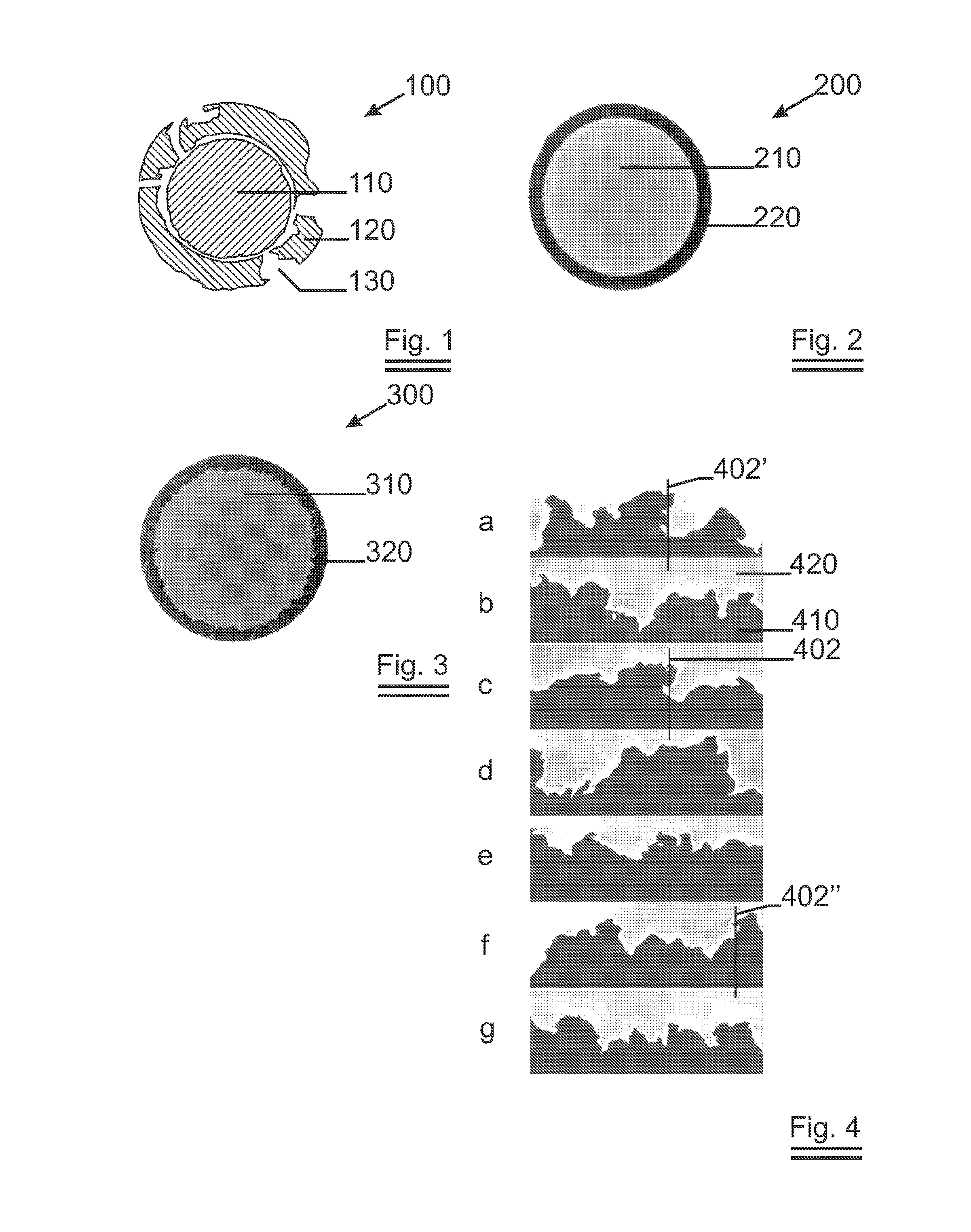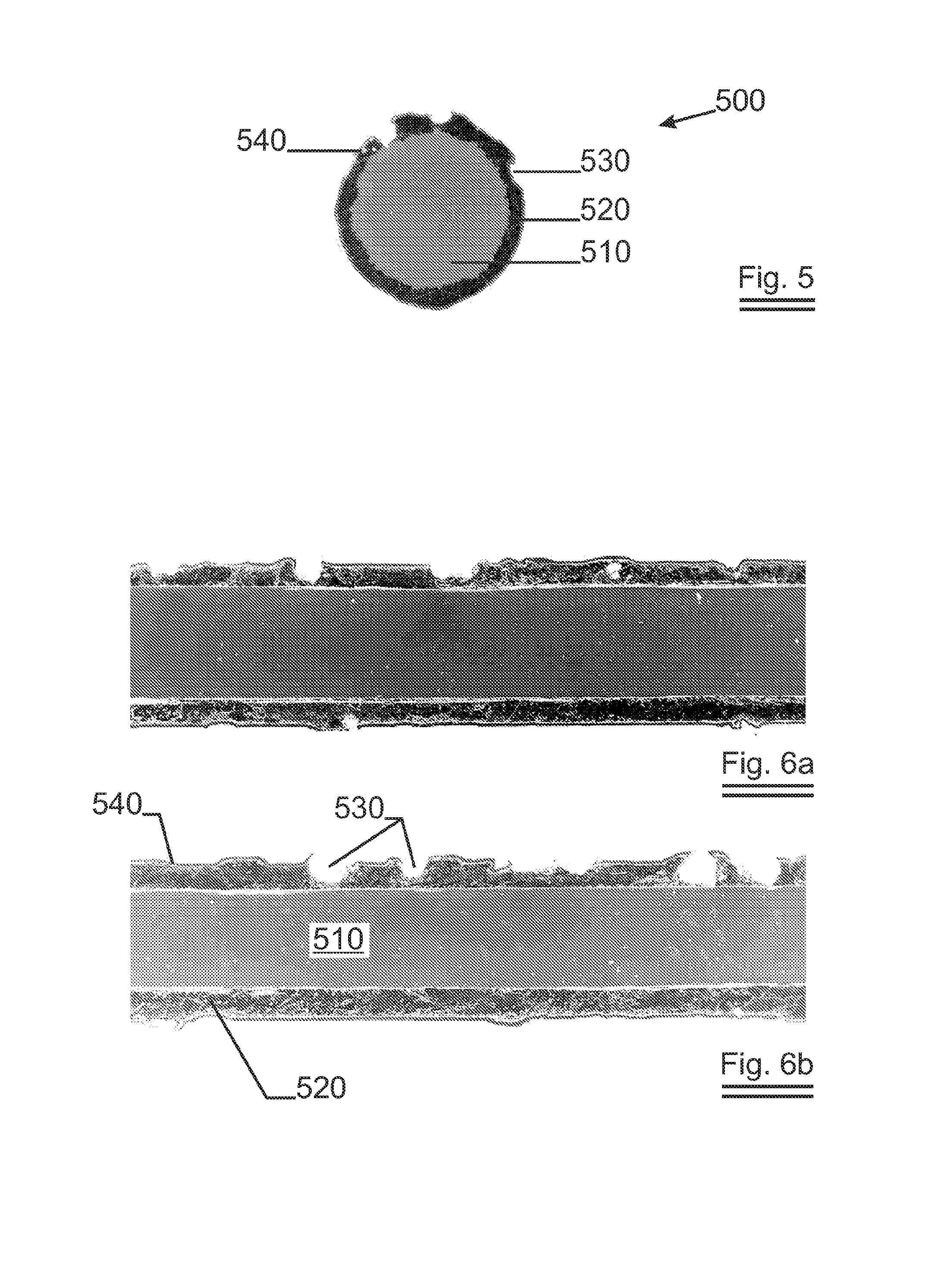Fixed abrasive sawing wire with a rough interface between core and outer sheath
a technology of outer sheath, which is applied in the field of monofilament sawing wire, can solve the problems of inability to produce fixed abrasive sawing wires of an appreciable length, difficulty in holding resin particles during sawing, and low tensile strength of the resulting wire, so as to increase the lifetime of the sheath layer and ensure the smoothness of the sawing. the effect of ensuring the adheren
- Summary
- Abstract
- Description
- Claims
- Application Information
AI Technical Summary
Benefits of technology
Problems solved by technology
Method used
Image
Examples
third embodiment
[0098]In a second series of tests a second and third embodiment of the invention was produced starting from the same wire rod composition but with deviating diameters and coating thicknesses. The results of all date on final wires are summarised in Table 2 that also includes the results of the first sample.
TABLE 2DΔD′dNr(μm)(μm)(μm)(μm)δ (μm)d′ (μm)εδ / d′ (%)Ra (μm)Rt (μm)28806010001208.01363.985.90.896.491110099129817515.02053.687.31.128.7731100115133025025.03002.968.31.449.96
[0099]The results illustrate that an increased relative coating thickness results in a noticeable increased roughness. After indentation with the same type of diamonds and a nickel fixation layer the fixed abrasive sawing wire showed a similar cutting behaviour.
fourth embodiment
[0100]In a fourth embodiment, the wire of sample 1 was not coated with a nickel layer after mechanical diamond indentation, but with an organic coating layer. Therefore the wire was electrostatically coated with an epoxy powder EP 49.7-49.9 from SigmaKalon based on Bisphenol-A (BPA) with curing agent. Subsequently the wire was cured in a run-through oven at temperature of 180° C. for about 120 to 540 seconds. Again the wire was tested on a silicon crystal block (46.6 mm high×125 mm wide). The machine was operated in ‘constant bow mode’ set at 3°, the wire tension was kept constant at about 8 N, 30 m of wire was cycled (thro and fro) in 7 seconds giving an average speed of (2×30 / 7=) about 8.6 m / s. Water with an additive was used as a coolant. The wire cut the crystal at a rate of 0.8 mm to 1.0 mm / min over the 125 mm width. The crystal was cut in about 42 minutes. Again no delamination was observed after cutting the crystal.
PUM
| Property | Measurement | Unit |
|---|---|---|
| Fraction | aaaaa | aaaaa |
| Diameter | aaaaa | aaaaa |
| Fraction | aaaaa | aaaaa |
Abstract
Description
Claims
Application Information
 Login to View More
Login to View More - R&D
- Intellectual Property
- Life Sciences
- Materials
- Tech Scout
- Unparalleled Data Quality
- Higher Quality Content
- 60% Fewer Hallucinations
Browse by: Latest US Patents, China's latest patents, Technical Efficacy Thesaurus, Application Domain, Technology Topic, Popular Technical Reports.
© 2025 PatSnap. All rights reserved.Legal|Privacy policy|Modern Slavery Act Transparency Statement|Sitemap|About US| Contact US: help@patsnap.com



